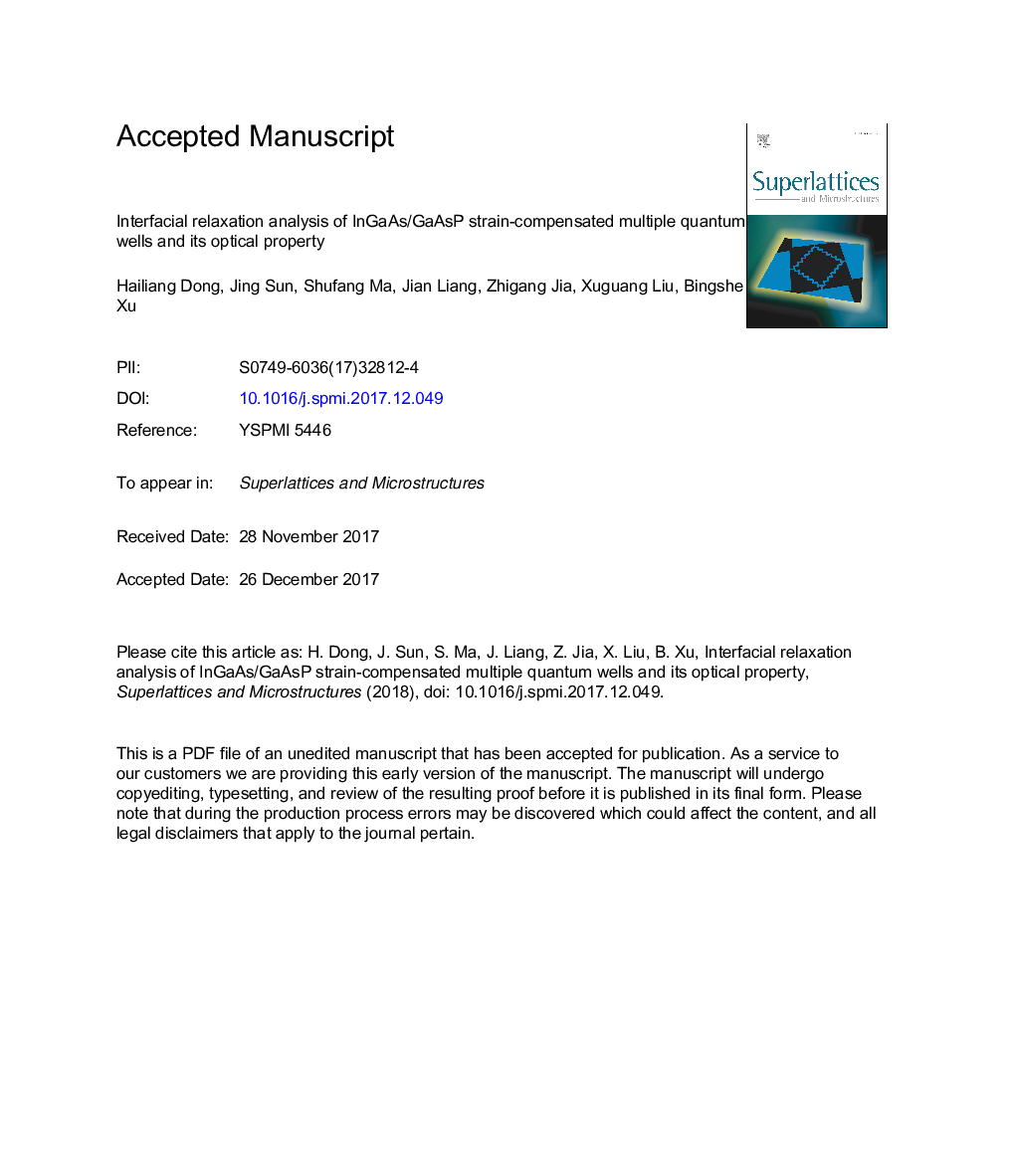| Article ID | Journal | Published Year | Pages | File Type |
|---|---|---|---|---|
| 7939148 | Superlattices and Microstructures | 2018 | 20 Pages |
Abstract
InGaAs/GaAsP strain-compensated multiple quantum wells were prepared by metal organic chemical vapor deposition on GaAs (100) substrates with misorientation of 15° toward [111]. In order to obtain better strain-compensated abrupt heterojunction interfaces, the compressive strain and relaxation of different quantum well and the total accumulated strain were investigated by adjusting In composition and the thickness of InxGa1-xAs well and GaAs1-yPy barrier keep constant. High resolution X-ray diffraction results indicate the crystal and interfacial structures of In0.18Ga0.82As (7â¯nm)/GaAs1-yPy with the least relaxation and total strain mismatch are better than others. From in-situ surface reflectivity curves, we observed the slope of reflectivity curve of multiple quantum wells increases with increasing lattice relaxation. Atomic force microscopic results show surface morphologies of three samples are Volmer-Weber mode. Indium segregation at heterointerface between well and barrier were investigated by secondary ion mass spectrometry which indicate indium diffusion width increase with the increasing total strain mismatch. Finally, a shoulder peak was observed from Gaussian fitting of photoluminescence, stemming from the lattice relaxation. These results demonstrate that the relaxation process is introduced and indium segregation length widens as the relaxation increases. The experimental results will be favorable for optimizing the epitaxial growth of InGaAs/GaAsP strain-compensated quantum wells in order to obtain high quality smooth heterointerface.
Related Topics
Physical Sciences and Engineering
Materials Science
Electronic, Optical and Magnetic Materials
Authors
Hailiang Dong, Jing Sun, Shufang Ma, Jian Liang, Zhigang Jia, Xuguang Liu, Bingshe Xu,
